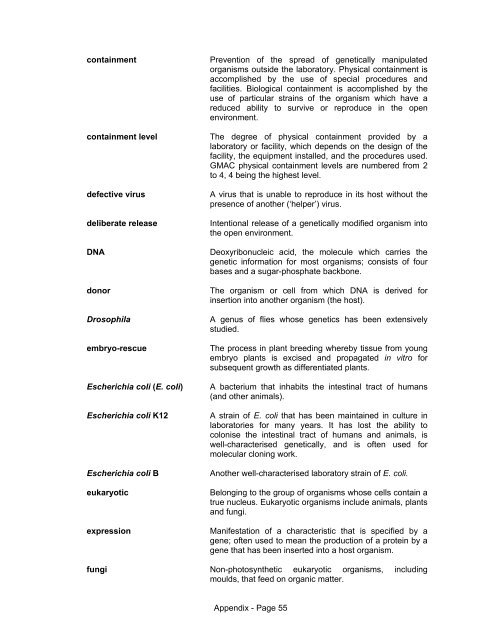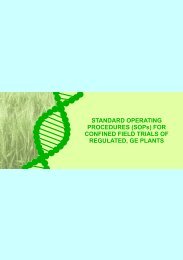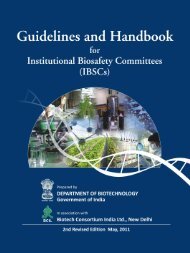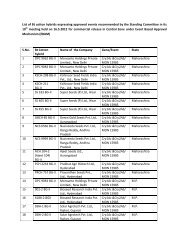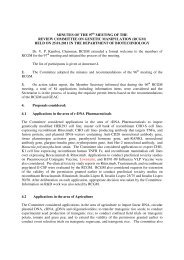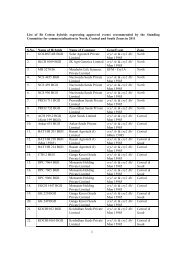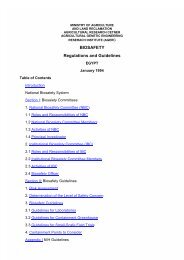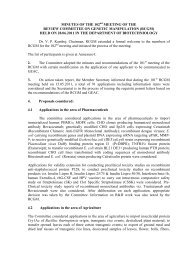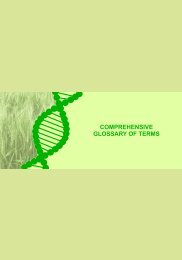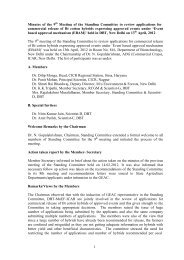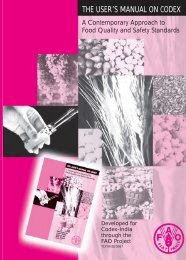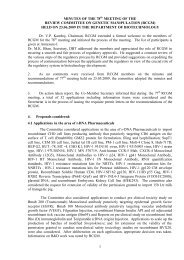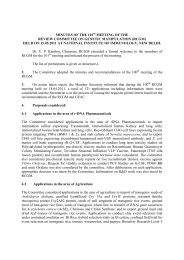Biosafety Guidelines For Research On Genetically Modified ...
Biosafety Guidelines For Research On Genetically Modified ...
Biosafety Guidelines For Research On Genetically Modified ...
Create successful ePaper yourself
Turn your PDF publications into a flip-book with our unique Google optimized e-Paper software.
containment<br />
containment level<br />
defective virus<br />
deliberate release<br />
DNA<br />
donor<br />
Drosophila<br />
embryo-rescue<br />
Escherichia coli (E. coli)<br />
Escherichia coli K12<br />
Escherichia coli B<br />
eukaryotic<br />
expression<br />
Prevention of the spread of genetically manipulated<br />
organisms outside the laboratory. Physical containment is<br />
accomplished by the use of special procedures and<br />
facilities. Biological containment is accomplished by the<br />
use of particular strains of the organism which have a<br />
reduced ability to survive or reproduce in the open<br />
environment.<br />
The degree of physical containment provided by a<br />
laboratory or facility, which depends on the design of the<br />
facility, the equipment installed, and the procedures used.<br />
GMAC physical containment levels are numbered from 2<br />
to 4, 4 being the highest level.<br />
A virus that is unable to reproduce in its host without the<br />
presence of another (‘helper’) virus.<br />
Intentional release of a genetically modified organism into<br />
the open environment.<br />
Deoxyribonucleic acid, the molecule which carries the<br />
genetic information for most organisms; consists of four<br />
bases and a sugar-phosphate backbone.<br />
The organism or cell from which DNA is derived for<br />
insertion into another organism (the host).<br />
A genus of flies whose genetics has been extensively<br />
studied.<br />
The process in plant breeding whereby tissue from young<br />
embryo plants is excised and propagated in vitro for<br />
subsequent growth as differentiated plants.<br />
A bacterium that inhabits the intestinal tract of humans<br />
(and other animals).<br />
A strain of E. coli that has been maintained in culture in<br />
laboratories for many years. It has lost the ability to<br />
colonise the intestinal tract of humans and animals, is<br />
well-characterised genetically, and is often used for<br />
molecular cloning work.<br />
Another well-characterised laboratory strain of E. coli.<br />
Belonging to the group of organisms whose cells contain a<br />
true nucleus. Eukaryotic organisms include animals, plants<br />
and fungi.<br />
Manifestation of a characteristic that is specified by a<br />
gene; often used to mean the production of a protein by a<br />
gene that has been inserted into a host organism.<br />
fungi Non-photosynthetic eukaryotic organisms, including<br />
moulds, that feed on organic matter.<br />
Appendix - Page 55


